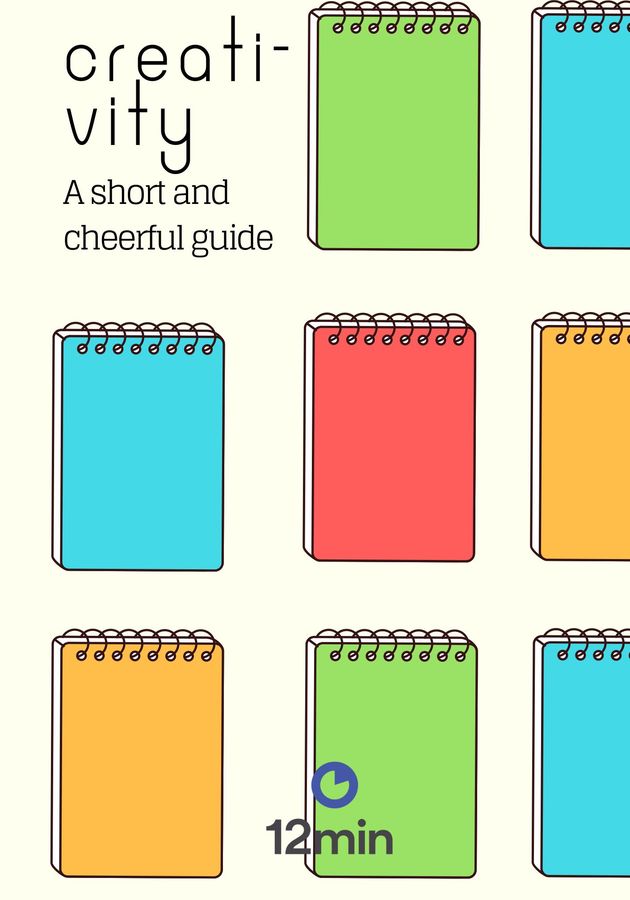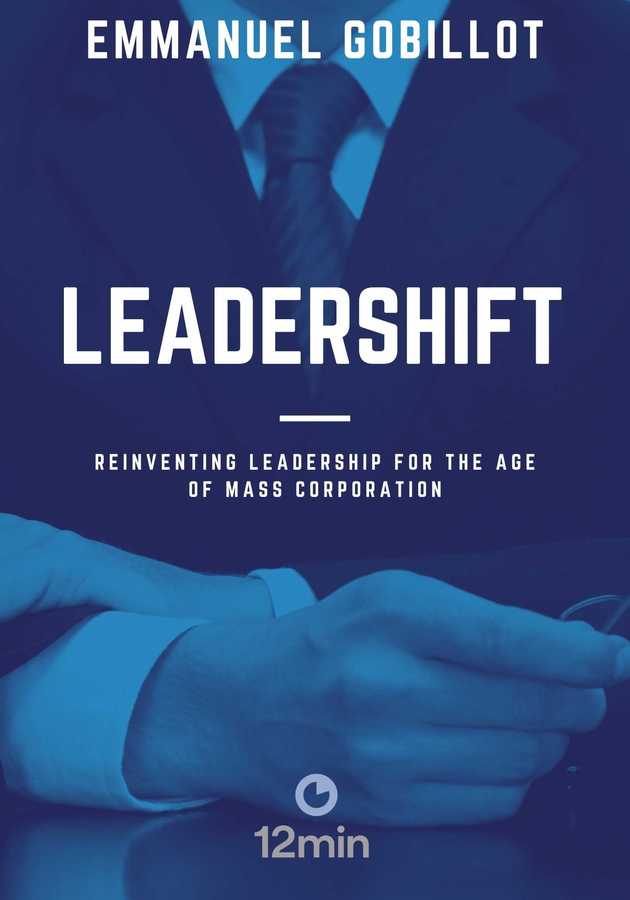Can you imagine what Lady Gaga and Elon Musk have in common? Ferrari and Skrillex? Alexander the Great and the Cuban Revolution? Well, Shane Snow spent a great deal of time researching the secret of all those people and corporations and their climbing to success in several areas. And, well, he came to some very interesting answers in this surprisingly flexible and inspiring book.
You can start learning from its catchy title: indeed, what are smartcuts? They aren’t the same as shortcuts for sure, as you are going to see in this book’s lessons. Actually, smartcuts are ways of succeeding in intelligent, simple and inspiring ways, instead of just tricking your way right to the top.
Shortcuts are easier to take but are harder to maintain. Smartcuts, on the other hand, are knowledge accumulated through the ages. Smartcutting means learning with hackers, innovators, and icons on how to accelerate success, wisdom built over decades of knowledge from the human adventure in comedy theaters, in space stations, from catching big waves in the ocean, from beating video-game records and from blasting speakers with revolutionary music or words.
Welcome to the smartcuts!
Welcome to lateral thinking
The knowledge that separates people that build empires while most of us build a house: knowing how to work smarter instead of simply working harder! Leading to success is a path called lateral thinking, a more complex way to say smartcuts. Lateral thinking assembles how successful people act since remote times - from Ancient Greece to the 21st-century, - to step out of simple-minded questions and encounter solutions never thought up before.
If you are interested in learning more about that, take a look at the next nine shortcuts showing impressive ways of thinking laterally at taking the example of highly successful people. Let’s go?
Hacking the ladder
Hacking the ladder is the ability to question a problem’s basic assumptions in the way of solving it differently. It is a good definition for lateral thinking, and ties the whole of this book in an elegant fashion.
Let’s take an example: imagine that you need to gain a TV set in one night, without buying, just asking people in their houses. Can you imagine someone giving you a television out of nothing? Well, it wouldn’t be a problem for some bored Mormon American students that invented a game called Bigger or better.
The game is played by splitting into teams. It’ll start with the choice of some random small object, like a toothpick. The teams then disperse and walk from door to door asking the person who answers if he (or she) has anything “bigger or better” than that small object for exchanging. The first few houses are hard, because people usually don’t want toothpicks randomly at night. But suddenly it becomes a pen, then a shirt, and a magazine, an old hat, some t-shirts, an old bike… In the end, the teams compare their trades and see which one wins. There are stories of people transforming pens in stereo systems, TV sets, and even a full-size canoe.
This is the story of lateral thinking. If you do it correctly, it can look like a magic trick, but just a logical step in the direction of innovation it’s all that it is.. Hacking the ladder is stepping ahead, working smarter in the direction of a goal. We are taught to work hard and step little by little in a hierarchy to be successful.
Training with masters
In the mid-1990s, a children’s clinic in London was suffering from a high mortality rate in their cardiac care unit. The deaths happened especially during transferring children in post-operatory condition to the intensive care unit. Sure, it was a very delicate procedure, the child already had been opened up in the surgery process and then had to be transferred to life support, with equipment and lots of other medical paraphernalia. The team tried hard, for years, to do better, and lower the mortality rate,, but failed.
No one could imagine, but their salvation was in Ferrari’s Formula 1 pit-stop team in Italy. All that the doctors needed to prevent deaths was speed and accuracy that Ferrari's team used to repair the car, change tires, and refuel. They started to learn with Ferrari’s racing team, including tricks like having a conductor that would lead the various personnel involved in transferring patients. They learned to remain silent in this process and even hired a dance choreographer to practice their way around the problem. In a few months, the hospital reduced its handling errors errors by 66%.
Now, ladies and gentlemen, this is how you can learn with masters on thinking laterally about a problem.
Rapid feedback
How can feedback affect your motivation toward your goals? The effect can be amazing or terrible, depending on the situation. So how can feedback indeed help to produce lateral thinking?
The secret behind schools of comedy and Silicon Valley big businesses seems to be the same: fail often. That doesn’t sound encouraging, but, in reality, these comedians only transform their exposure to failure into tests, into experiments. That way, failing is not the end of the road but just one more step to success.
The Second City, a school of comedy, often exposes their students to big crowds so they can improvise. In first attempts, most do terrible, but, in doing so, they can rapidly learn how to feel rejected or accepted by the crowd. This way failure turns into feedback. If someone studies comedy a whole semester and then faces a crowd that rejects his (or hers) jokes, it will be terribly difficult to transform that experience into something positive, such as feedback. If this person experiments with it every night, he (or she) can understand that there must be chemistry with the audience, and eventually will learn to use it in his (or her) favor.
The approach is the same for tech businesses. Upworthy - a startup genuinely interested in bringing inspiring stories to a large number of people - started using its failure in its favor by trying out a whole series of distinct headlines for their articles, looking for various reactions from different people. That way, each failure was actually feedback! In the end, more than 10 million people learned about the story of one dying young teenager just because Upworthy changed the article’s title during a series of tests.
Platforms
A person interested in succeeding fast can’t be worried about doing everything by his or her own. This is something Heinemeier Hansson, a racing driver and also a computer programmer, knows. Hansson doesn’t like to do extra work just for the sake of it. He wants to do more with less time and effort.
To understand how he transformed the landscape of programming, let’s take a look at how it works. A microchip inside a computer does millions of operations using circuits that turn on and off. Those operations are converted digitally to numbers (0s and 1s) the working basis for computing. To encode this very abstract forms of communication, people created programming languages, such as C, translating binary code into actual software language that we can understand.
Above all that, platforms can help people to learn to code and to create new things without having to do all the work, thanks to decades of computing evolution. Hansson perfectioned a platform that makes programming way easier and approachable called Ruby, later renamed to Ruby on Rails. Suddenly, lots of different people started using that platform to solve problems all over the world. Indeed Twitter was created by programmers using that platform!
Remember that even Isaac Newton said his success was due to standing on the shoulders of giants. Platforms teach us how to learn and use skills focusing greatness instead of reinventing the wheel.
Waves
You can prepare yourself and learn to catch a wave in the sea if you are a surfer. You can study the sea trying to discover its patterns. You can train over the years. But a surfer’s success can only become real at one moment:: when he (or she) figures out the science of being at the right place and at the right time.
A great example of someone who learned this hacking is Sonny Moore, the name behind Skrillex, the phenomenon of the so-called dubstep. Sonny had a bad period, with his Emo band breaking up just after riding a big wave. Without any money and presenting voice problems, it looked like he should give up.
In fact, it was just the beginning of a process to catch another big wave. He started to mess around with electronic music and to throw dance parties to showcase his work. Soon, the free music he put uploaded started gathering some attention. One day, a producer approached him and asked if he would like to remix an artist named Lady Gaga (still not so famous). And it was the time for Sonny to spot another wave he could catch. Sonny remixed Bad Romance, and suddenly everything was just crazy: its music video surpassed one billion views as of December 2018 and counting..
That is a secret of experimentation and sensorial training, a step to hacking the way to success: learning how to experiment with trends that are available. That’s why companies, like Google, keep experimenting with such different stuff. They’re like surfers looking towards the ocean, waiting for the right moment to catch a big wave.
Superconnectors
How can you affect and approach people in fast and massive ways? That was the problem that Fidel Castro and Che Guevara had in their hands when they failed to take Cuba from the hands of dictator Fulgencio Batista. The answer was the now famous Radio Rebelde, a system of communication that spread the revolutionary message through the villages of Cuba, accompanied by the increasingly positive presence of the guerrilla promoting the improvement of every day’s working-class life in Cuban fields.
In this case, the radio was a superconnector. It amplified the voice of the revolution and made it easier for the people to perceive that something was happening. But at a party that you don’t know anyone, the superconnector can be a friend that knows a bunch of people and can improve your chances of having fun. He or she will make your life easier in helping you to connect, his a hub.
The aforementioned has a very significant role in the ladder leading to success. There’s always someone who can amplify your reach. And there are a few people that came to success kept investing in collaboration. It is the case of J. J Abrams, a movie director and a producer that reached the top with the help of others, and now is a perfect example of a guy who is a hub to help others. He is always collaborating and leading new people to the business.
Momentum
Momentum can take someone to the stars overnight. And it can be predicted or even fabricated if you understand its dynamics, especially in the connected world we live. Snow shows that a simple tweet, at the right time, can be legendary. When a blackout happened in the middle of Super Bowl, and no one knew what to do, suddenly, Oreo tweeted a picture of a dark room lit just by one e cookie with the writing you can still dunk in the dark. Done, this became legendary, exploded on BuzzFeed and was still talked months later.
Michelle Phan, a young student with a simple notebook, turned an average YouTube channel into a big hit just by showing how to imitate Lady Gaga’s makeup from the Bad Romance video. She learned how to make a tutorial with legendary painter Bob Ross and studied YouTube’s first-page patterns, discovering that in the weekends it wasn’t updated. So, she programmed her video to be a hit on Friday and earned three extra exposition days.
That is how to take advantage of momentum and provide a way to the top by yourself.
Simplicity
Sometimes simplicity can be the most revolutionary ideal. It can even save lives. Such was the case of Jane Chen, who studied Design for Extreme Affordability at Stanford Business School.
Simplicity was key in her duty to save millions of premature children worldwide, especially in underdeveloped countries. According to the World Health Organization three-quarters of premature deaths could be prevented with proper equipment. The typical incubator has a price range between 20 thousand and 40 thousand US dollars.
Chen and her colleagues at Stanford discovered that the basic premise of the incubator was keeping the babies warm. They constructed Embrace, a “sleeping bag for babies” that works with a small heated box. Each unit costs US$25, nearly 0,1% of a traditional incubator.
Sometimes bigger is not better! And sometimes the smartest step is a step back. Innovation means more about doing something different than creating something from nothing. When cutting out what is unnecessary, there’s more room for real substance. And sometimes constraints are just what makes something astonishing emerge.
10x Thinking
The last smartcut is a principle behind the success of really great enterprises, such as Elon Musk’s SpaceX. Who could imagine that a guy with the crazy dream of creating a space agency on his own could really be successful? Today, SpaceX can put rockets into space spending much less money and effort than governmental agencies, like NASA.
The principle behind such a long shot: it is easier to improve something ten-times than to make it only 10% better. The difference is in the basis we’ve been talking since the beginning: to work better and intelligently not only harder. Giving people something 10x better adds value to your delivery, and this value is a great money attractor.
Well, when you decide to battle a problem as hard as if you were leading humanity on a journey to Mars, you will have very little competition. That way it’s easier to go toward a solution. Especially if you can manage to put others on board with your ambitious vision. Superconnecting through the imagination of millions worldwide, you can have the support that you’ll need to make miracles happen.
Final notes
As you can see, the way to success is a path full of possibilities. If you are feeling trapped inside a cycle that allows just routinely slow evolution, ,try to think laterally! In this microbook, you read some tips on how to make that happen. Catching waves, trends and enjoying the momentum. Creating opportunity by connecting to the right people. Advancing with intelligence and making the difference.





























